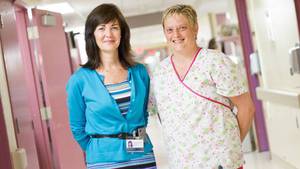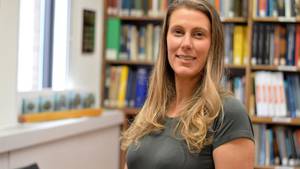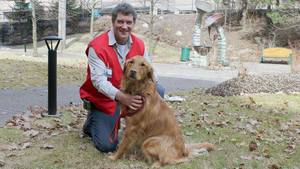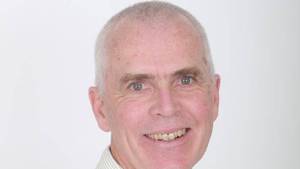People usually associate paramedics with an ambulance, but there’s a highly-specialized team at the QEII Health Sciences Centre that put their unique skills to work every day in the emergency department.
Their origins can be traced back to the original Victoria General site, where paramedics would sometimes assist physicians and nursing staff in the emergency department during their downtime. When the new Halifax Infirmary was built and all buildings were amalgamated into the QEII in 1996, and the ambulance service was integrated into a provincial program, this promising practice could have been abandoned. But as critical care paramedic Patrick Froese tells it, steps were quickly taken to preserve and expand on this innovative new model of care.
“They placed a couple of paramedics at the Halifax Infirmary site in 1997,” he notes. “As the program and patients’ needs have expanded, so has the number of paramedics and their role.”
At first, the assistance they provided was closely tied to their traditional role of transferring and resuscitating sick and injured people. But according to Dr. Sam Campbell, clinical chief of the QEII’s emergency department, opportunities to “expand their scope” were soon identified.
“They started doing things that their basic training put them in a good position to pick up as extra skills.”
Soon paramedics were assisting in the triage process, managing blood clots and helping to administer anaesthetic drugs, which demands very close monitoring for dangerous side effects. This alone led to decreased pressure on the operating rooms.
“It’s an extremely skilled job and the team has gotten better and better at it,” Dr. Campbell says.
Moving into the QEII’s Charles V. Keating Emergency and Trauma Centre in 2009 led to even more exciting breakthroughs.
“We had six extra beds so the suggestion was ‘Why can’t we roll this into a routine thing?’” Dr. Campbell relates.
The paramedics in this new “Pod Five” area continued to expand their role, taking on increasingly specialized tasks such as casting and suturing.
“The paramedics are now teaching the med students how to suture,” Dr. Campbell says. “They’re the most appropriate teacher because they do it so often.”
Patrick is particularly proud of the program’s constant evolution.
“Our skills and training complement each other well and it's for the better of the patients.”
-Patrick Froese
“We now have departmental paramedics in the resuscitation and trauma area providing airway management, procedural sedation and analgesia. Another paramedic in the rapid assessment unit helps with surgery consultation. And primary care paramedics are helping with intravenous therapy, blood work and point-of-care testing.”
“Between 1,000 to 1,500 emergency procedural sedations are now done annually by paramedics,” Dr. Campbell notes.
The team interacts with over 30 per cent of all emergency department visits and three per cent of the hospital’s overall patient volume. A quick glance at the numbers seems to bear out the team’s positive impact. For example, an initial evaluation of the program showed that the rate of patients leaving the emergency department without being seen dropped by 12 per cent and unscheduled return visits had gone down by 20 per cent.
Peter Hico, a full-time QEII critical care paramedic, knows that inter-departmental co-operation is key to this success.
“If I can treat five or 10 patients in an hour that do not require specialized emergency nursing care, it frees up our nurses to manage the patients that need their skills the most,” he says.
The synergy provided by the paramedics, physicians and nurses stationed in Pod Five and the smaller Pod One results in a productive “ebb and flow,” according to Dr. Campbell.
“A Pod Five paramedic might say ‘We’re getting control of things here. Maybe I can go down to Pod One and identify patients that can go through Pod Five. This allows us to process those patients much more efficiently.”
This observation is echoed by Patrick.
“Our skills and training complement each other well and it’s for the better of the patients,” he says.
Rob MacKinley, health services manager for the QEII’s emergency department, says the paramedics are part of a large team who care for Atlantic Canadians every day.
“The QEII’s paramedics are part of a network of emergency care who build on each other’s expertise to deliver the best care,” says Rob. “We’re incredibly proud of the whole interdisciplinary team.”








